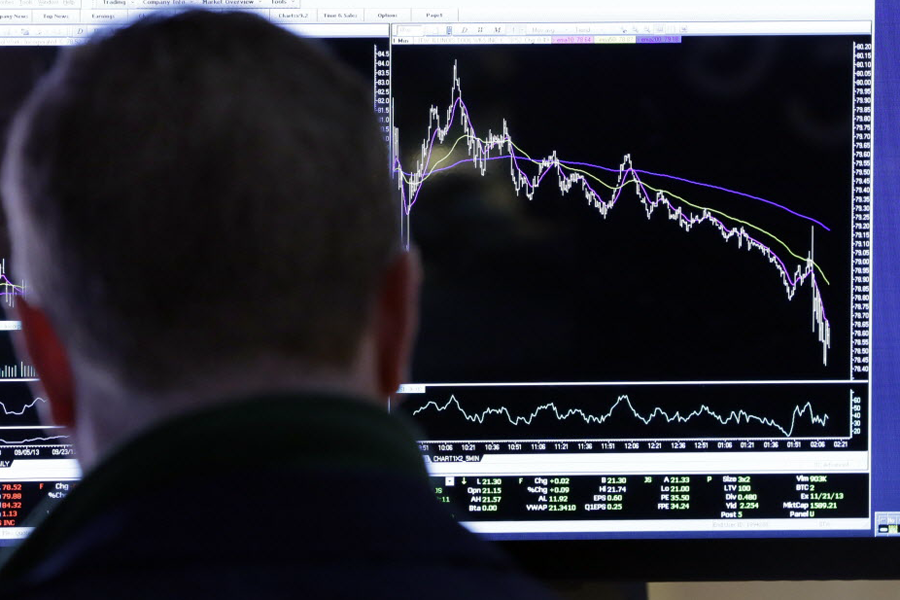Fed steams ahead with bond ‘taper.’ Are global markets ready?
Loading...
| Washington
The Federal Reserve issued a vote of confidence in an improving US economy Wednesday, announcing plans to pare back the pace of Fed bond purchases by another $10 billion per month starting in February.
The Fed is still, on balance, trying to use its policy to stimulate economic growth amid high unemployment and the protracted recovery that has followed the deep recession that ended in 2009.
But by continuing to “taper” its bond purchases, which were designed to exert downward pressure on long-term interest rates, America’s central bank has begun a slow process of phasing out extraordinarily accommodative policies.
Financial markets are still getting used to the idea that the unusual degree of monetary ease has begun to unwind.
The Standard & Poor’s 500 stock index was down about 1 percent for the day in afternoon trading, and has fallen about 3 percent since Jan. 22. Stocks in emerging-market nations have been hammered harder, as the Fed move implies tighter financial conditions for the world economy.
An index of emerging market stocks is down 8 percent this month, and economists are warning of slower growth ahead for nations including Turkey, South Africa, and Brazil.
The Fed, while taking account of global conditions, is focused squarely on promoting a healthy monetary climate for the US economy. And for the moment at least, it sees tapering as the right course.
“Household spending and business fixed investment advanced more quickly in recent months,” Fed policymakers said in characterizing the recent improvement in the US economy. Referring to the effect of some federal tax hikes and spending cuts over the past year, they said “fiscal policy is restraining economic growth, although the extent of restraint is diminishing.”
Notably, the policy statement contained no mention of recent turbulence in global financial markets.
That could reflect a desire by Fed officials to show they aren’t afraid of a few market bumps on their road of policy shifts.
The Fed has been offering stimulus through the channels of ultra-low interest rates and through several rounds of bond purchases since 2008.
At a December meeting, the policymakers led by Chairman Ben Bernanke decide to downshift from $85 billion per month to $75 billion per month in bond purchases, a program also known as “quantitative easing.”
The just-announced shift will bring that pace down to $65 billion per month, roughly split between purchases of Treasury and mortgage-market bonds.
If the economy improves as expected, the bond purchases could be stepped down further at subsequent meetings and phased out entirely later this year.
Those decisions will be guided not by Mr. Bernanke but by Janet Yellen, who is set to take the Fed’s reins at the end of the month.
“We expect her to stick with the plan to continue winding down the asset purchases this year,” and to begin hiking the Fed’s short-term interest rate in the middle of 2015, said Paul Ashworth, chief US economist for Capital Economics, in a written comment after the central bank’s announcement.
The Fed’s policy statement emphasized that its course is not “preset,” but will be determined by economic conditions.
Recent “taper” decisions have been made easier by a quieting of fiscal discord between Democrats and Republicans in Washington. As both sides head into what promises to be a close-fought congressional election, appetite for brinkmanship over federal spending or the nation’s “debt limit” seems to have diminished.
At the same time, the Fed is weighing its own balance sheet, which now has an unprecedented $4 trillion portfolio of bonds. Economists say it will be easier to manage monetary policy in the future if the Fed stops adding to that portfolio.
But the end of bond purchases won’t mean the end of Fed stimulus.
For now, inflation appears tame, giving the Fed space to keep seeking to hold interest rates down in its bid to help the economy recover to full employment.






